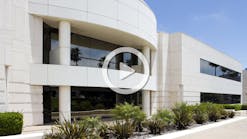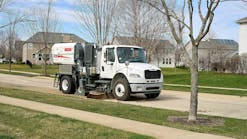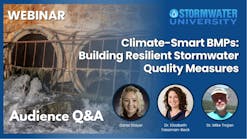About the author:
Craig A. Straub, Ph.D., is senior project manager for Apex Co. LLC. Straub can be reached at [email protected]. Brian J. Kwiatkowski is senior ecologist for Apex Co. LLC. Kwiatkowski can be reached at [email protected].
Craig A. Straub & Brian J. Kwiatkowski
undefinedUrban development and changing weather patterns can alter the hydrologic characteristics of a watershed by increasing the rate and volume of storm water runoff. The use of storm water best management practices (BMPs) can mitigate these impacts if designed appropriately. Storm water BMPs, particularly in urban areas, can have a profound influence on erosion reduction, flood mitigation, and water quality and habitat improvement. An effective approach to storm water management is one that addresses the problems associated with urban runoff by managing storm water close to its source, and using BMPs that encourage capture, storage and infiltration.
Storm water BMPs can be designed to address a range of storm events, from large flood flows to smaller, more frequent rainstorms, which exert the greatest influence on the water quality and physical habitat of receiving water bodies. Specifically, designing to imitate the ecological function of natural aquatic, wetland or riparian systems to reduce runoff and encourage infiltration could include better management of existing urban green spaces; restoring floodplain connectivity; and installation of community rain gardens, bioretention systems, pervious pavements and storm water planters. These types of BMPs provide a broad spectrum of potential benefits while being visually and functionally integrated into the existing landscape and streetscape.
Performance Monitoring
Given the widespread acceptance and application of ecologically functional BMPs and green storm water infrastructure, their use in managing post-construction storm water runoff rates, volumes and pollutant loads often goes unquestioned. However, monitoring the true performance of these types of BMPs can be overlooked and typically is not funded through state or federal grant assistance programs. Performance monitoring using just a handful of accepted methods can confirm or refute whether specific BMP practices are indeed meeting the objectives of water quality and habitat improvement.
Water Quality
Water quality is the most common metric analyzed and can include:
- • pH;
- • Total phosphorous;
- • Nitrates;
- • Turbidity;
- • Conductivity; and
- • Fecal coliforms.
The number of collected samples needed to support statistically valid measurements of performance can be determined based on the pollutant of interest. Water quality samples are only valid if a sufficient number of samples are collected and used in the measurement. In general, the higher variability of a pollutant concentration from sample to sample and the smaller the difference between inflow and outflow concentrations, the greater the number of samples that must be collected to produce valid measurements of performance. As more samples are collected, the uncertainty associated with each of the individual samples is reduced and more statistically valid performance measurements can be produced.
Prior to initiating a monitoring program, some criteria should be established for determining when the monitoring results will be deemed statistically significant and when additional monitoring will be required. Once the number of samples required to produce a statistically valid measurement of performance has been determined, an iterative process may be needed to rescope the monitoring effort in order to remain within the project-specific budget and schedule. When scoping a monitoring effort, it is reasonable to expect to collect data from five to 10 paired storm event samples each year.
Consideration should not only be given to the number of samples needed to produce statistically valid measurements of performance, but also to the storm events that need to be sampled. Ideally, samples would be collected during a variety of storm events with a range of intensities and durations in order to evaluate the performance of the storm water BMP over a wide range of conditions. Historical rainfall data should be investigated to help determine a monitoring approach that might be used to evaluate practice performance over a wide range of storm events.
Automated samplers are recommended for sample collection. They eliminate the need for an operator to be on site to perform sample collection and allow for the collection of flow-weighted, composite samples. Although an operator will not need to be on site, routine inspection and maintenance still are necessary to ensure that the equipment is functioning properly before and after storm events.
Isco and American Sigma are two manufacturers of automated sampling equipment that is specifically designed for sampling storm water runoff. They have flexible programming capabilities to begin collecting samples when a specific inflow or outflow rate is detected. These samplers also can be equipped with flowmeters and rain gauges so that rainfall and flow data can be collected at the same time as water quality data. Many of the newest automated samplers also can be set up to interface with water quality monitoring probes, such as the YSI 6000, which can provide a continuous record of standard water quality parameters, including temperature, salinity, pH and turbidity. This probe also can be used to trigger sample collection when specific water quality conditions are detected in the inflow or outflow stream.
Biological Indicators
The quality of a wetland feature within an aquatic system is directly related to the quality of its amphibian community. Amphibians and macroinvertebrates are monitored as biotic indicators of habitat quality and ecosystem health. Funnel traps and multiple-plate artificial substrate samplers are commonly employed for biotic monitoring.
Funnel traps provide a quantitative sample of both amphibians and macroinvertebrates. They consist of aluminum window screen cylinders with fiberglass screen funnels in order to ensure that the mesh is fine enough to capture amphibian larvae. The diameter of the main cylinder of the funnel traps should be 8 in., with an opening in the small end of the funnel 1.75 in. in diameter.
Funnel traps typically are set and retrieved three times during the sampling period, beginning in March and ending in early July. The sample dates should be six weeks apart, with the first sample date coinciding with the advent of adult amphibian activity, which can vary from year to year depending on the weather; however, if it is not practical to monitor the weather and/or determine when adult amphibians begin to arrive in the project area, the average local dates of the beginning of amphibian breeding season can be used as starting dates.
Funnel traps should be spaced to ensure habitat types are representatively sampled. Aerial photos can be used to determine even placement of the traps around the perimeter of the BMP system. When placing the traps, ensure a portion of each trap remains above water to reduce the mortality of captured organisms. The traps should be marked with flagging tape to ensure easy retrieval.
The traps are collected 24 hours after being set and emptied over a collection and sorting tray. Organisms such as adult amphibians are identified, recorded and released. The macroinvertebrates from each trap are preserved in a labeled bottle containing a 95% ethanol solution, sorted and identified under a microscope.
Multiple-plate artificial substrate samplers provide quantitative sampling of macroinvertebrates in BMP systems with baseflow. The samplers typically are deployed for about six weeks between June 15 and Sept. 30. They are tied to a weighted object and placed at the bottom of the BMP system. Optimal velocity of flow in sampled areas is between 0.7 and 1.5 ft per second. The speed of the current in sampled areas should be no less than 0.3 ft per second. It also is important to place the samplers in areas where they will not be exposed if the water level drops.
Upon collection, the traps should be cut from the block and remain submerged for placement into a dip net or bucket for transfer to a facility for identification. Upon arrival for identification, the samplers are disassembled and scraped with a scrub brush to ensure complete removal of substrate. The substrate can be preserved in a 95% ethyl alcohol solution.
Conclusion
Performance monitoring is important in assessing the effectiveness of implemented projects to improve site hydrology, water quality and habitat. The effectiveness of storm water BMPs is informative for decision makers to comply with water quality standards and to develop a better understanding of the actual maintenance and life-cycle costs when assessing cost-benefit analysis. By applying the methods described above, ecologically functional BMP performance can be effectively assessed on a project-by-project basis, thereby contributing to the growing body of knowledge supporting the use of these innovative types of BMPs.
Download: Here






